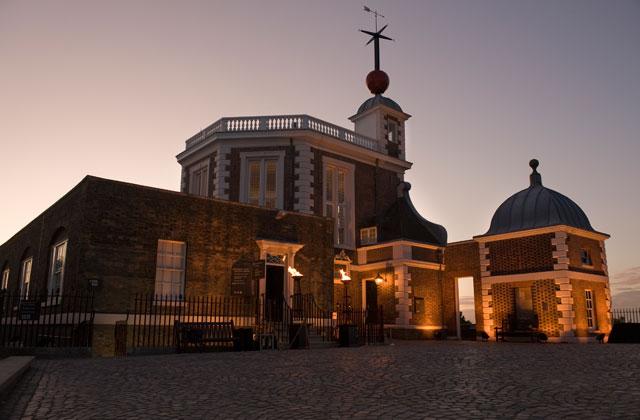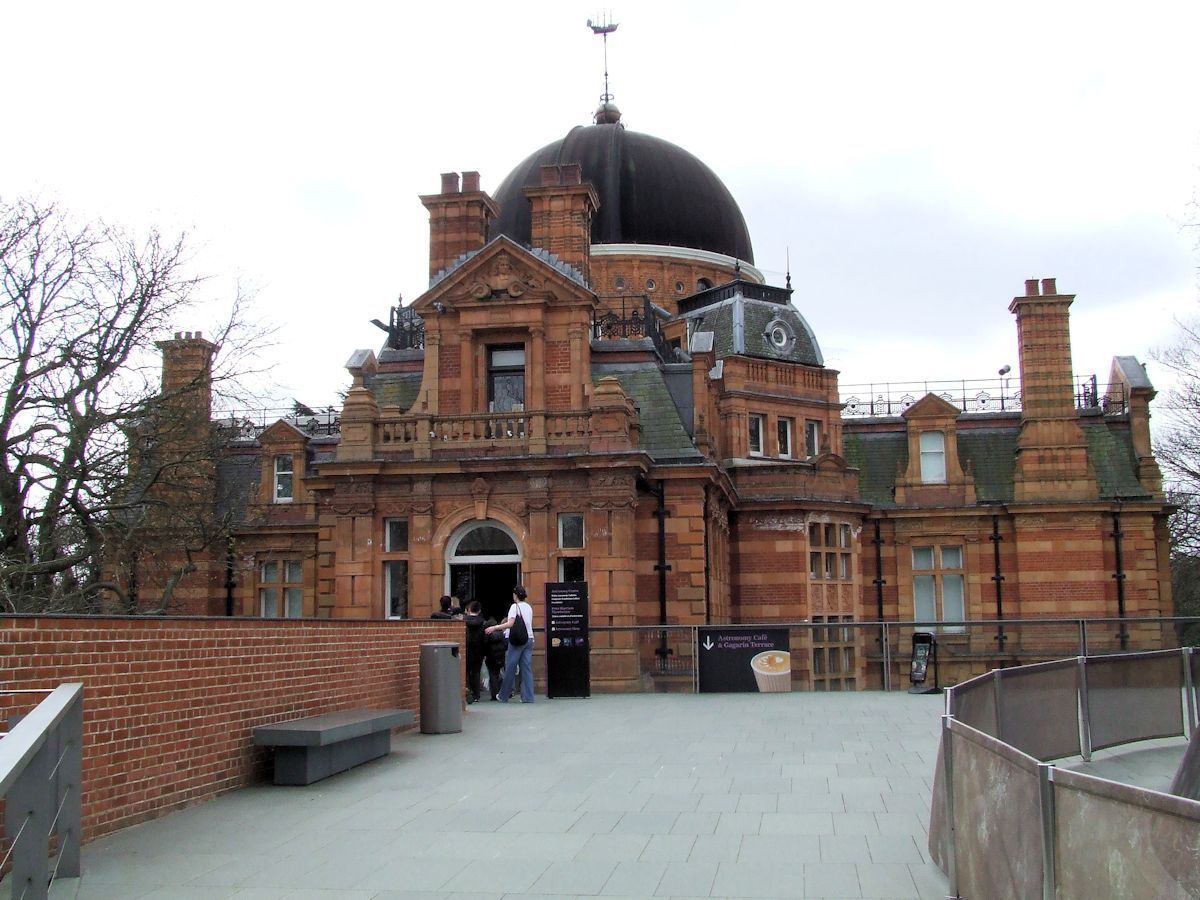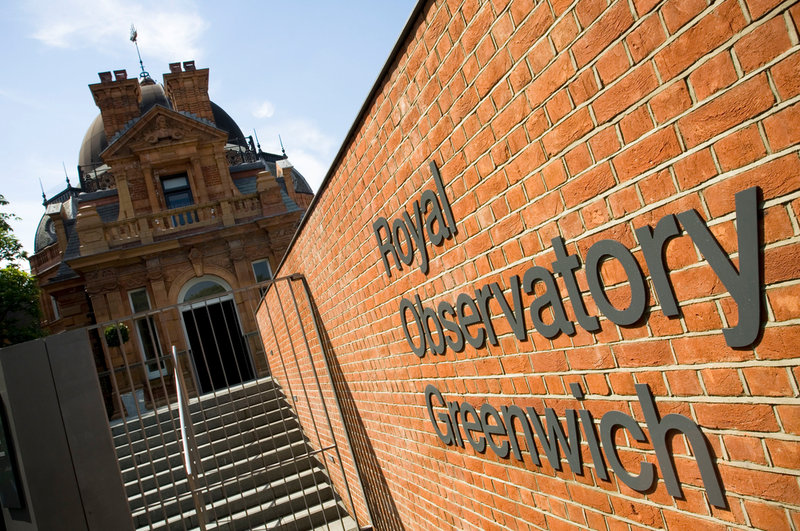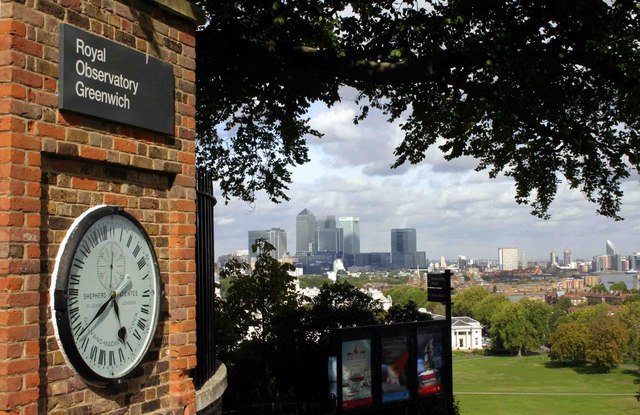This is a great family day out that mixes education and entertainment. The walk to the top of the hill within the grounds afforded us a wonderful view of the observatory
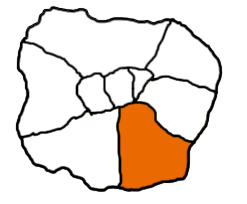
 PIN
Royal Observatory - Greenwich
PIN
Royal Observatory - Greenwich
Stand at the centre of world time
You can discover the past, present and future wonders of astronomy at the centre of time and take an amazing journey through the historic home of British astronomy, Greenwich Mean Time and the Prime Meridian of the World. Visit the Observatory and explore how great scientists first mapped the seas and the stars. Stand astride two hemispheres on the Prime Meridian Line and see pioneering inventions including the UK’s largest refracting telescope, and touch a 4.5 billion year-old asteroid at London`s only planetarium.
Discover the history of space and time
• Stand astride two hemispheres on the meridian line, the origin of Greenwich Mean Time
• Admire beautiful Flamsteed House, London’s original observatory, designed by Christopher Wren in 1675
• See world-famous historic equipment that shaped our understanding of space and time, including restored Harrison clocks and telescopes
• Touch a 4.5 billion year old meteorite at London’s only planetarium
• Get stunning views across London from the Observatory in Greenwich Royal Park
History
As Europeans took to the seas to explore the world and trade with other countries, astronomical information of sufficient quantity and accuracy to aid navigation, cartography and timekeeping was needed, including working out how to measure longitude. It was against this background that King Charles II appointed a Royal Commission to look into investing in astronomy. Among those sitting on the Royal Commission was Sir Christopher Wren – most famous now for his architecture, but also a former professor of astronomy at Oxford. On March 4, 1675, the Commission reported back to Charles II, recommending the foundation of an observatory – Britain’s first state-funded scientific institution – and the appointment of an astronomer. Charles reportedly called for immediate action and on the same day John Flamsteed was named ‘astronomical observator’. A new era for Greenwich and for astronomy, time and navigation, had begun.
It was Wren who suggested using the ruined Greenwich Castle as the site for the new observatory. This location had the advantages of having solid foundations in place from the old castle, as well as being located on high ground in a royal park. Wren also oversaw the design of the building.
Flamsteed House was the first part of the Observatory to be built. It was intended as a home for the Astronomer Royal and for entertaining guests.
The project was notable for the speed in which it happened, and for the small budget with which it was achieved. Flamsteed was installed by 10 July 1676, less than a year after the foundation stone was laid, and a total of £520.45 was spent on construction, with costs being kept down by using recycled materials.
Over the years, Flamsteed House was home to many children, servants, cooks and nursemaids, as well as astronomers. The house itself was extended and buildings were added to the site to accommodate new and bigger instruments.
In 1818, the Royal Observatory was transferred to the Admiralty and it expanded significantly. By the late 1800s there were around 60 people on site. The Royal Observatory as you see it today features instruments remounted in their original locations, providing a timeline of a working observatory throughout the 18th and 19th centuries.
John Flamsteed held the post of Astronomer Royal for 42 years. In the nearly 300 years it functioned as a working observatory, there were only nine other Astronomers Royal at Greenwich. Between them, the first two Astronomers Royal – John Flamsteed and Edmond Halley – plotted all the stars visible in the northern and southern hemispheres. At the same time, because astronomy and time are inextricably linked, the Royal Observatory was key in helping to develop accurate clocks.
In the 1760s, the introduction of Nevil Maskelyne’s tables for finding longitude at sea by astronomical means and John Harrison’s timekeepers, made it possible for the world to be charted with a new, scientific accuracy.
The first public time signal in the country was broadcast from the roof of Flamsteed House in 1833, by dropping a ball at a predetermined time.
Since then, each day at 12.55 the ball is hoisted half way up the mast – originally a signal for navigators on ships and in docks along the Thames to be prepared. Then at two minutes to the hour, the ball is hoisted to the top of the mast. At exactly 13.00, it drops. This allowed sea captains about to set sail to check the rate of their marine chronometers, a technology which the Royal Observatory had a huge hand in improving.
Since the late 19th century, the Royal Observatory is the historic source of the Prime Meridian of the world, Longitude 0° 0' 0''. The world prime meridian marks the divide between the eastern and western hemispheres.
Before this, almost every town in the world kept its own local time. There were no national or international conventions to set how time should be measured. However, with the vast expansion of the railway and communications networks during the 1850s and 1860s, the worldwide need for an international time standard became imperative. The Greenwich Meridian was chosen to be the Prime Meridian of the World in 1884. Forty-one delegates from 25 nations met in Washington DC for the International Meridian Conference. By the end of the conference, Greenwich had won the prize of Longitude 0º.
Tags
- History
- , Museum
- , Indoor
- , south east
- , family
- , The Striking South East
Location
Royal Observatory Greenwich , Blackheath Ave, London , SE10 8XJ (View on Google Maps)South East London
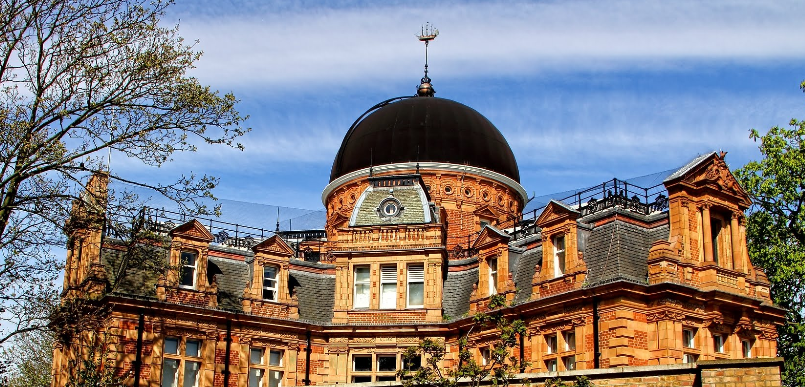


 Facebook
Facebook Twitter
Twitter Tumblr
Tumblr Google+
Google+ Pinterest
Pinterest LinkedIn
LinkedIn







